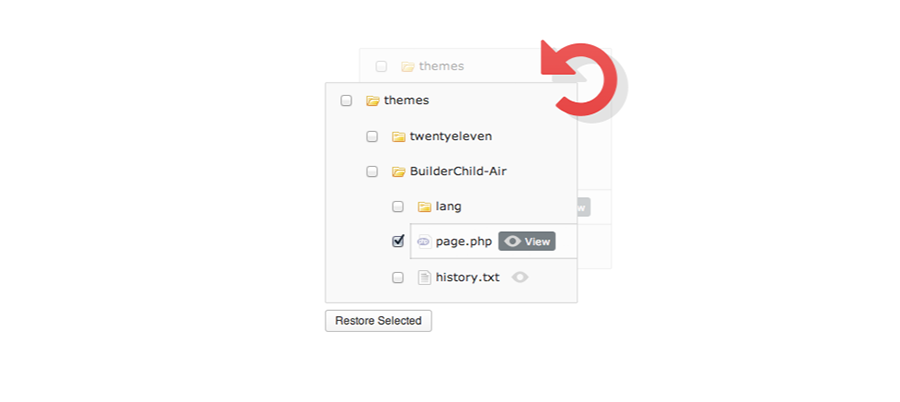
- #RESTORE BACKUP BUDDY UPDATE#
- #RESTORE BACKUP BUDDY FULL#
- #RESTORE BACKUP BUDDY CODE#
- #RESTORE BACKUP BUDDY DOWNLOAD#
You can also import and restore backups made by other plugins, like BackUpWordPress and BackWPup, and from generic SQL (uncompressed, gzip-compressed, or bzip2-compressed) backups. UpdraftPlus allows each WordPress entity - database, plugin, or theme - to be backed up in a separate file, and you can restore the backups with one click. It takes a few clicks, and there’s no need to access your server. And if you can’t get into your WordPress dashboard, you can restore a backup from just as easily.
#RESTORE BACKUP BUDDY UPDATE#
If you accidentally delete something you didn’t mean to or a plugin update causes a problem, you can undo your mistake and rewind your site to the exact moment before the action took place.
#RESTORE BACKUP BUDDY FULL#
You can view this full list - including date, time, and the user who took each action - in your account. Jetpack uses its Activity feature to store a list of the actions that happen on your site, like published pages, updated plugins, and login attempts. The Jetpack Backup team built a restore solution that’s accessible no matter your level of technical knowledge or experience (no one wants to deal with a complicated process during a stressful moment!). If your website goes down, you should be able to restore a backup easily and quickly. The last thing you want is to find out that your backups are set up incorrectly when you need them most! Easy restore features It’s important to choose a backup plugin that fits with your level of comfort and experience. Note that you will need to either have an account with Dropbox, Google Drive, or another cloud service, or receive backups via email or FTP (File Transfer Protocol). There, you can choose how often to back up your files and database, and select a location to store your backups. After installing the plugin, navigate to Settings → UpdraftPlus Backups and click the Settings tab at the top. UpdraftPlus setup is a little more complicated.
#RESTORE BACKUP BUDDY CODE#
While you need a license code for BackupBuddy, it does provide a Quick Setup wizard that will walk you through settings, storage options, and backup schedule choices, so it’s relatively easy to use for beginners. It also integrates nicely with other Jetpack features you might already use, like brute force protection and a Content Delivery Network (CDN). After installation, backups begin automatically. Jetpack Backup is perhaps the most intuitive and simple to set up.
#RESTORE BACKUP BUDDY DOWNLOAD#
You can also download your backups and save them to your computer or cloud storage any time you’d like. Even the most secure storage solutions can be compromised, so you never want to store assets in a single location. Jetpack Backup saves your website to ’s secure servers as well as to Amazon S3, for redundancy, which is a valuable feature not offered by many other options.

Storing backups separately from your host also means that you can still restore your site if your entire server goes down. A good backup plugin will automatically back up your website and store your files in the cloud.īy the year 2020, 83% of enterprises will work in the cloud and store files across multiple locations for security and ease of access. You may forget to back up your site for months, only to realize your mistake when something goes wrong. Figuring out which one will work best for you requires determining your needs so you can understand which solutions meet them. You’ve likely heard of popular backup options like Jetpack Backup, BackupBuddy, and UpdraftPlus. This means you have many backup solutions available to safeguard your work.īelow, we take a look at some popular options - Jetpack Backup, UpdraftPlus, and BackupBuddy - and compare their features, pricing, and more. Since WordPress is open source, anyone can develop plugins, themes, or tutorials to help people customize websites - and tens of thousands of people do. Regular, high-quality website backups are the best way to protect your valuable assets and restore your site if it ever goes down or is hacked.

The last thing you want is to lose all of your hard work. As a website owner, you’ve spent months, maybe even years, developing content and getting your layout exactly the way you want.


 0 kommentar(er)
0 kommentar(er)
